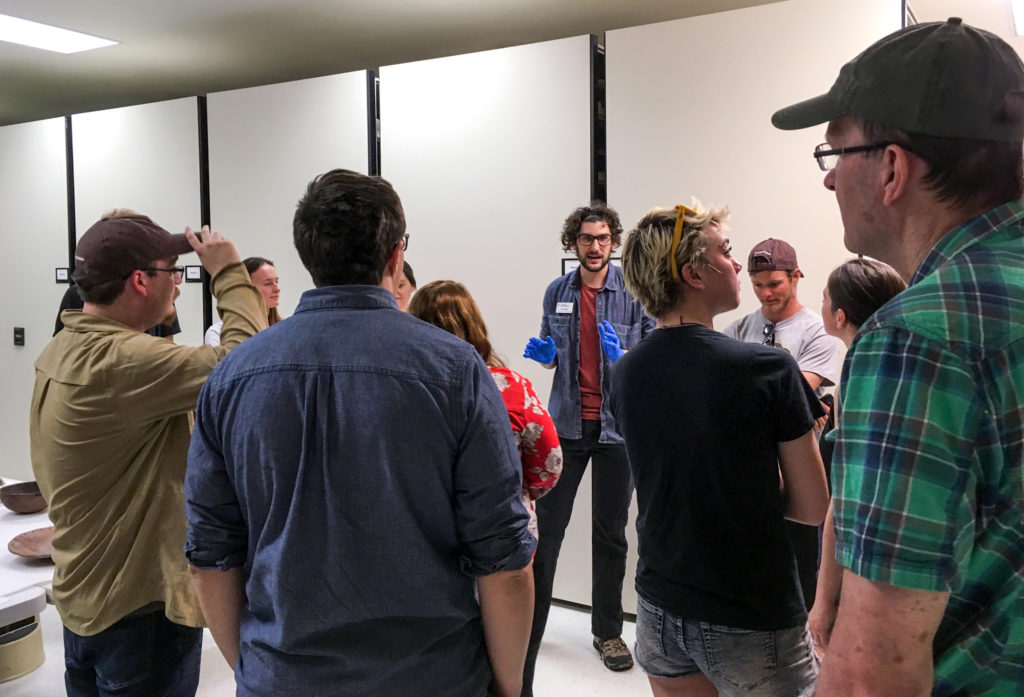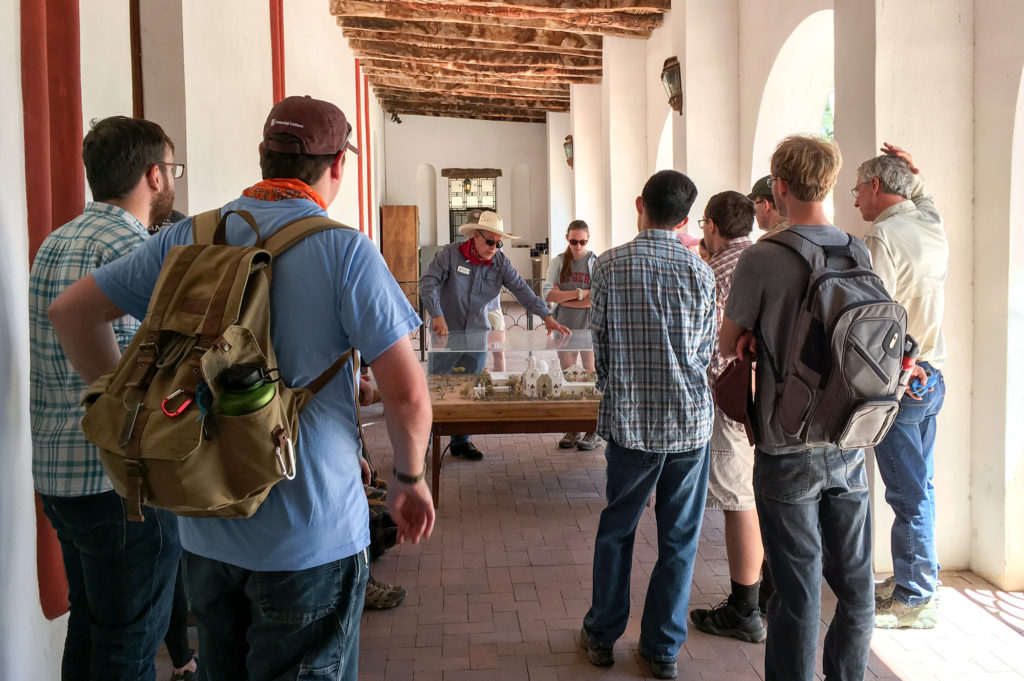- Home
- >
- Preservation Archaeology Blog
- >
- New Places, New Faces
This post is one in our annual series of essays by our Preservation Archaeology Field School students. We invite you to follow along with their experiences over the next six weeks through their own words.
(June 6, 2019)—Being in a new place is always hard, especially when surrounded by people you’ve never met. Being unfamiliar with the Southwest made everything intimidating, but it’s experiences like these where the people make all the difference. Our site visits throughout Tucson would’ve been incredible on their own, yet it was the tour guides that left the most lasting impression on me.
Riley Duke at the Arizona State Museum showed us the museum’s collection of Southwestern ceramics, taking us through row upon row of vessels from various cultural areas throughout the region. Riley expertly navigated our archaeological questions, fluidly explaining each variety of ware and type we came across. The extent of his knowledge was clearly evident, as was his enthusiasm for the material before us. Riley taught me the broad array of archaeological material held in museum collections in such an excited manner, making the information available to us that much more groundbreaking.

Martín De Soto led us around the San Xavier Mission, taking us through the choir loft, bell tower, and other behind the scenes areas. Martín described the structure’s art and architecture in great detail, discussing how the community cleaned up and put portions of the mission back together after it fell into disrepair. He spoke quietly and softly, displaying so much reverence for the site and the parishioners visiting it. Martín set a positive example of preserving and protecting material culture by exhibiting respect for the past and its landmarks. His thoughtful care for this historic place reveals to us exactly the kind of people archaeologists should be working with.

Dedric Lupe’s tour of the museum gallery at the Tohono O’odham Cultural Center revealed all the hard work he and others have put into this museum since he began his position as Curator of Collections. He pointed out the artifacts added to the exhibits after building the museum gallery. Dedric was open, inviting, and inspirational, graciously sharing his story with us and how he ended up at the cultural center. I was really touched by his honesty and drive to keep working so diligently in the cultural center’s repository, continuing to identify where objects came from despite how challenging that task may be at times. Dedric made it clear that working with descendant communities was not only vital to the progression of archaeology, but also easy when it involves collaborating with such charismatic and dedicated professionals.
These are just a few of the people who offered me a glimpse into the Southwest and a more informed perspective of who we will be working with over the course of this field school. As anthropologists, we study people, and it’s often the people themselves who educate us about who they are and what they do. Such personal accounts can’t be found in a textbook or museum exhibit. My experiences have encouraged me to talk to people, engage with them, and figure out what I can do to benefit them and their culture.
Explore the News
-
Join Today
Keep up with the latest discoveries in southwestern archaeology. Join today, and receive Archaeology Southwest Magazine, among other member benefits.